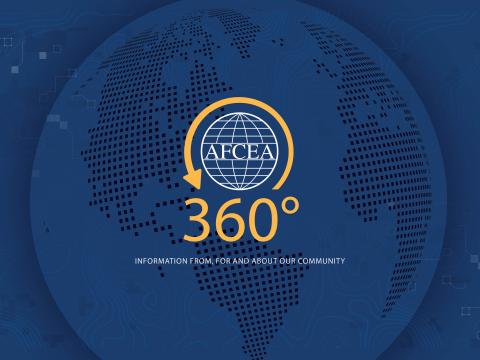Disruptive by Design: How Pokemon Is Go-ing to Transform Cyber Training
The U.S. Defense Department and the federal government could piggyback on the recent blockbuster popularity of Pokemon Go, the location-based augmented reality game that catapulted some couch potatoes from their sofas to the great outdoors, to transform cyber training.
The U.S. Defense Department and the federal government could piggyback on the recent blockbuster popularity of Pokemon Go, the location-based augmented reality game that catapulted some couch potatoes from their sofas to the great outdoors, to transform cyber training. The mobile app, an overnight international sensation, combines the virtual world of Pokemon with the real world in which people live.
The gaming craze offers insights on how to excite people to partake in—and really learn from—cybersecurity training.
One area that deserves scrutiny is computer-based training (CBT). The U.S. Air Force already is reviewing how much CBT airmen need for pre-deployment training and to stay up to date on human resources policies. “Can there be other methods used to deliver [training] that are more efficient and effective—and over what period of time?” Chief Master Sergeant of the Air Force James Cody asked in the Air Force Times in 2015. “Does it all have to be done at the same time, or can we space some of this out and have it build on each other?”
Perhaps the most well-known CBT effort is the Defense Department’s mandatory Cyber Awareness Challenge, an annual training course for service members and civilian employees that covers everything from identifying office hazards to protecting classified data and safeguarding networks against cyberthreats. There is also the joint service Level A Survival, Evasion, Resistance and Escape (SERE) training, a multihour CBT course meant to teach personnel traveling outside of the United States survival techniques should they become isolated, captured or detained. These endeavors could prove more valuable—and less excruciating—if developers mirrored the way players tackle the Pokemon Go game. They could incorporate interactive teaching methods and use the outdoors for training scenarios. After all, how much can someone really apply survival techniques if he or she is learning wilderness survival skills while sitting in front of a computer desk indoors?
And then there is the Air Force’s Self-Aid and Buddy Care (SABC) training, a mishmash of lessons that combines CBT about deployments, injuries and general safety with hands-on demonstrations, such as how to apply tourniquets. Again, these are lessons imparted when students sit in the comfort of an office.
Developers should strive to make these myriad training efforts as interactive and entertaining as Pokemon Go. The game itself might not teach life lessons, but it sure does attract users to pay attention to their smartphones. It is engaging. On the other hand, CBT graphics are out of date, and the Cyber Awareness Challenge is intended to be interactive, but it is not. App users today not only want to connect with people, but they also want—and if you ask millennials, they expect—the most up-to-date interfaces technology can offer. Millennials are in the driver’s seat of development, especially as they have surpassed Gen Xers as the largest generation in the U.S. labor force, according to the Pew Research Center. Augmented realities are the way of the future to build a better military.
Pokemon Go taps into rapid, impressive, real-time Global Positioning System (GPS) technology to help players on their quests to capture the cartoon pocket monsters. While the app’s network does not provide players with travel directions, it properly scans and reflects players’ surroundings and manages to accurately identify geographical terrains and sites, from monuments to crowded places of interest. A first-class graphical user interface tied to the GPS and Bluetooth technologies lets users play without always having to keep their eyes on their smartphones—all in the name of safety, of course.
How long do service members have to wait for improved deployment simulations or disaster preparation training? I am not the only airman still required to attend so-called “death by PowerPoint” trainings that actually leave me confused about how to apply the lessons in any real-life scenarios. We have the technology and the resources to do better. When will the government upgrade this essential lifesaving training? The technology behind the success of gaming apps such as Pokemon Go is at just about everyone’s fingertips.
Senior Airman Ryan René Rosado, USAF, is an intelligence analyst. She also received the Distinguished Young AFCEAN Award for 2015 and is a member of AFCEA’s Alamo Chapter. The views expressed here are her own and do not necessarily reflect the views of the U.S. Air Force.




Comment
Collection
Thank you for your article, Senior Airman Ryan Rosado! I would be interested to hear whether massive location based gaming could unlock on-demand intelligence? For example, augmented reality games could be a great way to get photos or sounds from hard to reach places. If you would like, please look for me on LinkedIn. Best wishes!
SrA Rosado is very much on
SrA Rosado is very much on point that Augmented Reality has a huge amount to offer in terms of potential depth of training. And Pokemon GO is just the latest in a string of AR games that have been emerging over the last few years, showing that the technology really is coming to maturity.
Meanwhile, GO's stunning success makes it an outstanding vehicle for driving discussion but, in addition to a lack of educational value, it shares many weaknesses with Army offerings as a game. GO's publisher trades on nostalgia the same way Army "interactive training" has traded on being a mandatory requirement. There are entire fields, including aspects of behavioral psychology, that have grown up around the games industry. We need to take the time to learn some fundamental lessons about what actually makes things engaging before we try to push forward with the latest technology. There's a reason that people still get engaged with decades old games and dismiss newer offerings after a short time of marveling over their slick graphics.
Mr. Whitacre; You may find looking into Pokemon GO's predecessor game from the same company very interesting. GO is, in many ways, a superior game that shows lessons learned their earlier offering. Their earlier offering, however, has some intriguing points of interest complete with photographs.
Comments